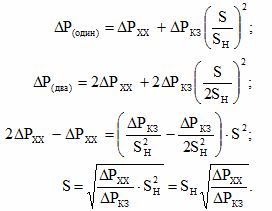Basic measures to reduce losses in electrical networks
 Power losses in networks are determined in order to reduce them. The process of reducing losses is optimizing the power grid mode. They are optimized at runtime and during network design. Under operating conditions, loss reduction measures are called organizational (they are not associated with additional capital investments), and during design they are primarily technical measures that require additional capital investments.
Power losses in networks are determined in order to reduce them. The process of reducing losses is optimizing the power grid mode. They are optimized at runtime and during network design. Under operating conditions, loss reduction measures are called organizational (they are not associated with additional capital investments), and during design they are primarily technical measures that require additional capital investments.
Organizational measures to reduce losses in electrical networks
1. Establishment of metering of electricity production and consumption.

where: Wh — counter.
ΔE = Wh1 — Wh2
Thus, it is necessary to organize the measurement and control of the energy flow.
2. Increase the level of working voltage.
The fact is that networks have an isolation limit:
-
° Networks up to 220 kV — with 15%,
-
° CNetworks 330 kV — at 10%,
-
° C500 kV networks and above — 5%.
This is especially important in 0.4 networks; 10; 35; 110; 220kV as these networks are very branched.

Thus, proper voltage regulation in networks is required to take into account energy losses. We should aim to maintain as much as possible with a voltage increase of 1% in networks up to 110kV power loss and 2%. In networks 220 kV must always be maintained at the highest possible voltage. In networks 330 kV and above, the voltage must be adjusted taking into account corona losses.

ΔP = ΔPk + ΔPn
3. Optimizing the modes of transformers at substations. Usually a substation has 2 or more transformers.


This measure boils down to getting power where it is preferable to turn off one transformer. Thanks to this, they save no-load losses, but slightly increase load losses. Since the transmission power is less than the nominal, the increase in losses is negligible.
4. Development of reasonable consumption norms for the production of a unit of output.
5. Fast and reliable network repair.
6. Determining the optimal places for disconnecting the electrical network,
Power networks 6-10 kV (city) and 35-110 kV networks are often closed, but operate in normally open mode. They in their areas have different cross-sections of wires and are heterogeneous.
In a closed heterogeneous network, the capacity equalization and the natural flow distribution deviate from the economic one, which corresponds to a minimum of losses. Under these conditions, according to the criterion of minimum losses, the places where the network is disconnected are often searched.
Technical measures to reduce losses to reduce losses in electrical networks
1. Reactive power compensation to reduce energy losses.This improves stress mode.


2. Increase in rated voltage due to deep bushings.
ΔP = (C2/ U2) NS R
3. Network setup.

4. Replacement of wires in the main sections of the network. As loads increase on the main sections of the network, currents flow that exceed the economic flows for those sections.
5. Replacement of underloaded transformers.
6. Installation of step-up transformers in closed circuits of the electrical network.
7. Replacement of transformers without load switches with transformers with on-load switches.
